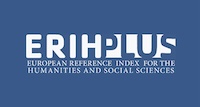El rol del maestro en indagaciones escolares mediante simulaciones
DOI:
https://doi.org/10.21556/edutec.2020.74.1803Palabras clave:
investigación científica, simulación, educación primaria, rol docenteResumen
En la didáctica de las ciencias experimentales las simulaciones mediante ordenador permiten a los estudiantes de primaria indagar fenómenos naturales sobre los que difícilmente podrían experimentar manipulativamente. Las simulaciones ayudan a mejorar el aprendizaje de los estudiantes, pero la mayor parte de la literatura sobre simulaciones no considera el papel de los maestros en estas indagaciones con experimentación virtual. Este trabajo de revisión sintetiza los principales resultados prácticos ofrecidos por las 8 investigaciones disponibles en la literatura. Todos ellos basados en simulaciones libremente disponibles en las plataformas PhET Simulations y Concorde Consortium.
La revisión concluye que faltan estudios integrados en su contexto curricular y estudios comparativos, en cuanto al papel del maestro, entre indagaciones tradicionales y mediante simulación. Finalmente se sugiere la oportunidad de desarrollar una biblioteca organizada y completa de simulaciones indagadoras para educación primaria.
Descargas
Citas
Chamberlain, J. M., Lancaster, K., Parson, R., & Perkins, K. K. (2014). How guidance affects student engagement with an interactive simulation. Chemistry Education Research and Practice, 15(4), 628–638. https://doi.org/10.1039/c4rp00009a
De Jong, T., & Van Joolingen, W. R. (1998). Scientific discovery learning with computer simulations of conceptual domains. Review of Educational Research, 68(2), 179–201. https://doi.org/10.3102/00346543068002179
Dean, D., & Kuhn, D. (2007). Direct instruction vs. Discovery: The long view. Science Education, 91(3), 384–397. https://doi.org/10.1002/sce.20194
Dobber, M., Zwart, R., Tanis, M., & van Oers, B. (2017). Literature review: The role of the teacher in inquiry-based education. In Educational Research Review (Vol. 22, pp. 194–214). Elsevier Ltd. https://doi.org/10.1016/j.edurev.2017.09.002
Easley, K. M. (2020). Simulations and Sensemaking in Elementary Project-Based Science. Ph.D.Dissertation http://hdl.handle.net/2027.42/155050
Ekmekci, A., & Gulacar, O. (2015). A case study for comparing the effectiveness of a computer simulation and a hands-on activity on learning electric circuits. Eurasia Journal of Mathematics, Science and Technology Education, 11(4), 765–775. https://doi.org/10.12973/eurasia.2015.1438a
Evolution Readiness – Concord Consortium. (n.d.). Retrieved August 10, 2020, from https://concord.org/our-work/research-projects/evolution-readiness/
Hennessy, S., Deaney, R., & Ruthven, K. (2006). Situated expertise in integrating use of multimedia simulation into secondary science teaching. International Journal of Science Education, 28(7), 701–732. https://doi.org/10.1080/09500690500404656
Horwitz, P. (2013). Evolution Is a Model, Why Not Teach It That Way? In D. F. Treagust & C-Y. Tsui (Ed.), Multiple representations in biological education (pp. 129–145). Springer. https://doi.org/10.1007/978-94-007-4192-8_8
Horwitz, P., McIntyre, C. A., Lord, T. L., O'Dwyer, L. M., & Staudt, C. (2013). Teaching "Evolution readiness" to fourth graders. Evolution: Education and Outreach, 6(1), 21. https://doi.org/10.1186/1936-6434-6-21
Hulshof, C. D., & de Jong, T. (2006). Using just-in-time information to support scientific discovery learning in a computer-based simulation. Interactive Learning Environments, 14(1), 79–94. https://doi.org/10.1080/10494820600769171
Kruit, P. M., Oostdam, R. J., van den Berg, E., & Schuitema, J. A. (2018). Effects of explicit instruction on the acquisition of students' science inquiry skills in grades 5 and 6 of primary education. International Journal of Science Education, 40(4), 421–441. https://doi.org/10.1080/09500693.2018.1428777
Kukkonen, J. E., Kärkkäinen, S., Dillon, P., & Keinonen, T. (2014). The Effects of Scaffolded Simulation-Based Inquiry Learning on Fifth-Graders' Representations of the Greenhouse Effect. International Journal of Science Education, 36(3), 406–424. https://doi.org/10.1080/09500693.2013.782452
Lehtinen, A., Lehesvuori, S., & Viiri, J. (2019). The Connection Between Forms of Guidance for Inquiry-Based Learning and the Communicative Approaches Applied—a Case Study in the Context of Pre-service Teachers. Research in Science Education, 49(6), 1547–1567. https://doi.org/10.1007/s11165-017-9666-7
Lehtinen, A., & Viiri, J. (2017). Guidance Provided by Teacher and Simulation for Inquiry-Based Learning: a Case Study. Journal of Science Education and Technology, 26(2), 193–206. https://doi.org/10.1007/s10956-016-9672-y
Manz, E. (2015). Resistance and the Development of Scientific Practice: Designing the Mangle Into Science Instruction. Cognition and Instruction, 33(2), 89–124. https://doi.org/10.1080/07370008.2014.1000490
Mclntyre, C., Lord, T., & Horwitz, P. (2012). BIG IDEAS for Little People. Science and Children, 50(2), 42–45. www.jstor.org/stable/43176252
Moore, E. B., Chamberlain, J. M., Parson, R., & Perkins, K. K. (2014). PhET interactive simulations: Transformative tools for teaching chemistry. Journal of Chemical Education, 91(8), 1191–1197. https://doi.org/10.1021/ed4005084
PhET: Free online physics, chemistry, biology, earth science and math simulations. (n.d.). Retrieved August 10, 2020, from https://phet.colorado.edu/
Puntambekar, S., Stylianou, A., & Goldstein, J. (2007). Comparing Classroom Enactments of an Inquiry Curriculum: Lessons Learned From Two Teachers. Journal of the Learning Sciences, 16(1), 81–130. https://doi.org/10.1080/10508400709336943
Rutten, N., Van Joolingen, W.R., & Van Der Veen, J. T. (2012) The learning effects of computer simulations in science education. Computers and Education 58(1), 136-153. http://dx.doi.org/10.1016/j.compedu.2011.07.017
Scalise, K., Timms, M., Moorjani, A., Clark, L., Holtermann, K., & Irvin, P. S. (2011). Student learning in science simulations: Design features that promote learning gains. Journal of Research in Science Teaching, 48(9), 1050–1078. https://doi.org/10.1002/tea.20437
Smetana, L. K., & Bell, R. L. (2012). Computer Simulations to Support Science Instruction and Learning: A critical review of the literature. International Journal of Science Education, 34(9), 1337–1370. https://doi.org/10.1080/09500693.2011.605182
Solé-Llussà, A., Aguilar, D., & Ibáñez, M. (2020). Vídeo-worked examples to support the development of elementary students' science process skills: a case study in an inquiry activity on electrical circuits. Research in Science & Technological Education, 1–21. https://doi.org/10.1080/02635143.2020.1786361
Stephens, A. L., & Clement, J. J. (2015). Use of physics simulations in whole class and small group settings: Comparative case studies. Computers and Education, 86, 137–156. https://doi.org/10.1016/j.compedu.2015.02.014
Wieman, C. E., Adams, W. K., Loeblein, P., & Perkins, K. K. (2010). Teaching Physics Using PhET Simulations. The Physics Teacher, 48(4), 225–227. https://doi.org/10.1119/1.3361987
Wu, H. L., & Pedersen, S. (2011). Integrating computer- and teacher-based scaffolds in science inquiry. Computers and Education, 57(4), 2352–2363. https://doi.org/10.1016/j.compedu.2011.05.011
Descargas
Publicado
Cómo citar
Número
Sección
Licencia
Con la entrega del trabajo, los autores ceden los derechos de publicación a la revista Edutec. Por su parte, Edutec autoriza su distribución siempre que no se altere su contenido y se indique su origen. Al final de cada artículo publicado en Edutec se indica cómo se debe citar.
La dirección y el consejo de redacción de Edutec Revista Electrónica de Tecnología Educativa, no aceptan ninguna responsabilidad sobre las afirmaciones e ideas expresadas por los autores en sus trabajos.









